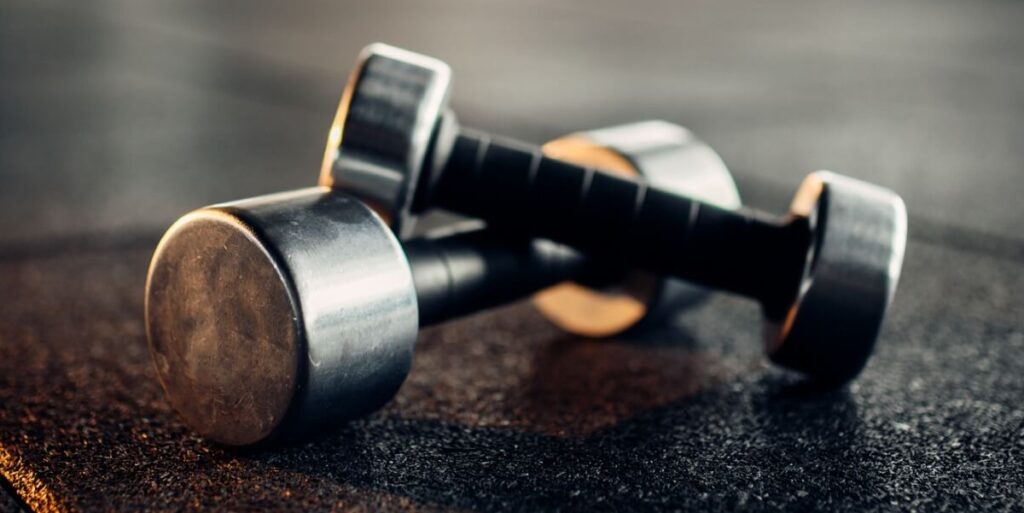Eco-friendly Commercial Rubber Flooring Options
Rubber is a popular choice of flooring for commercial spaces and high traffic areas. Commonly found in medical facilities, nursing homes, hospitals, and other health care environments, commercial rubber flooring rolls or sheets allow for resilient flooring installation – a requirement for maintaining sanitary conditions in places like operating rooms (ORs), emergency rooms (ERs), and intensive care units (ICUs).

Rubber is inherently resistant to bacteria and fungi. Commercial rubber flooring is dense, nonporous, and easy to clean and maintain. It is also difficult to damage, meaning that it won’t develop imperfections. Plus, the adhesives used to install it can be protected with antimicrobial agents.
In addition to contaminant resistance, commercial rubber flooring offers a variety of benefits that make it an especially resilient flooring installation in settings prone to spills, heavy usage, and wear and tear, like commercial kitchens, retail stores, schools, and gyms.

Additional Benefits of Rubber Flooring
- Scuff, scratch, impact, burn, chemical, water, moisture, mold, mildew, stain, and static-resistant
- Easy to maintain
- Sound absorbing
- Eco-friendly, recyclable, and free of PVC
- Available in many different colors and designs to suit diverse decors
Commercial rubber flooring also offers some of the best slip and fall resistance. Rubber flooring can meet and exceed the Americans with Disabilities Act (ADA) health care flooring requirements for slip resistance. In addition, you can increase traction on rubbing floor coverings by adding texture to the floor’s surface.
Rubber floors with a certain thickness and give are more forgiving if there is a fall. Don’t think of commercial rubber flooring as bouncy like a rubber ball. It does have a little bit of softness to it, but it’s still sure underfoot. However, it will absorb much of the impact of a fall rather than redirecting it back into a person’s body.
This means that, with commercial rubber flooring, not only is the risk of falling reduced, but any injury resulting from a fall that does occur is minimized. There’s no wonder why rubber flooring is used so much in assisted living facilities, as the risk for falls is higher with older residents.
Ready to explore rubber as a resilient flooring installation in your commercial space? Contact East Coast Flooring & Interiors today for a free estimate or to schedule an appointment to visit our South Florida commercial flooring showroom conveniently located in Pompano Beach.
What is commercial rubber flooring?
Commercial rubber flooring refers to flooring solutions made primarily from rubber, which is designed for use in commercial settings like gyms, retail stores, schools, hospitals, and other high-traffic areas. It comes in various formats including tiles, sheets, and rolls, and can be available in a wide variety of colors, patterns, and thicknesses.
Why is rubber flooring popular in commercial spaces?
Rubber flooring is popular in commercial spaces due to its resilience, durability, and safety features. It can handle heavy foot traffic without showing significant wear and provides a slip-resistant surface. Additionally, it’s comfortable underfoot and offers sound absorption qualities, which can be essential in spaces like gyms or busy corridors.
How do I maintain and clean commercial rubber flooring?
Maintaining and cleaning commercial rubber flooring is relatively straightforward:
- Regular Cleaning: Sweep or vacuum the floor daily to remove dirt and debris.
- Deep Cleaning: Mop the floor with a mild detergent mixed with water. It’s important to use cleaning agents that are compatible with rubber floors.
- Avoid Harsh Chemicals: Refrain from using strong acidic or alkaline cleaners as they can damage the rubber.
- Spill Management: Wipe up spills promptly to prevent staining and slipping hazards.
- Protective Measures: Using protective pads under heavy furniture or equipment can help in preventing indentation or damage to the flooring.
What are the benefits of commercial rubber flooring?
Commercial rubber flooring offers several benefits:
- Durability: It can withstand high traffic and heavy equipment, making it long-lasting.
- Safety: Provides a slip-resistant surface, reducing the risk of accidents.
- Maintenance: Easy to clean and requires minimal upkeep.
- Comfort: Offers cushioning, making it comfortable to walk or stand on.
- Sound Absorption: Helps in reducing noise levels in busy areas.
- Versatility: Available in various colors, patterns, and styles to match any decor.
Can commercial rubber flooring be installed in high-moisture areas?
Yes, commercial rubber flooring is well-suited for high-moisture areas. It’s non-porous, which means it won’t absorb water, making it an excellent choice for spaces like bathrooms, kitchens, or basements in commercial settings. Moreover, its slip-resistant nature makes it even more apt for moist environments.
How long does commercial rubber flooring last?
With proper care and maintenance, commercial rubber flooring can last for 20 years or more. Its longevity is one of its strong suits, especially when placed in high-traffic areas. However, its lifespan can vary based on factors such as the quality of the rubber, the level of foot traffic, maintenance practices, and environmental conditions.
Is commercial rubber flooring eco-friendly?
Yes, in many ways, commercial rubber flooring can be eco-friendly:
- Recycled Material: Many rubber floors are made from recycled rubber, typically from used tires.
- Longevity: Its durability means it doesn’t need to be replaced frequently, leading to less waste.
- Safe Production: Rubber flooring production, especially when sourced from reputable manufacturers, can have lower emissions and reduced environmental impact.
- Biodegradability: Natural rubber is biodegradable, although this process is slow. However, most commercial rubber flooring is made of synthetic or a blend of natural and synthetic rubber.